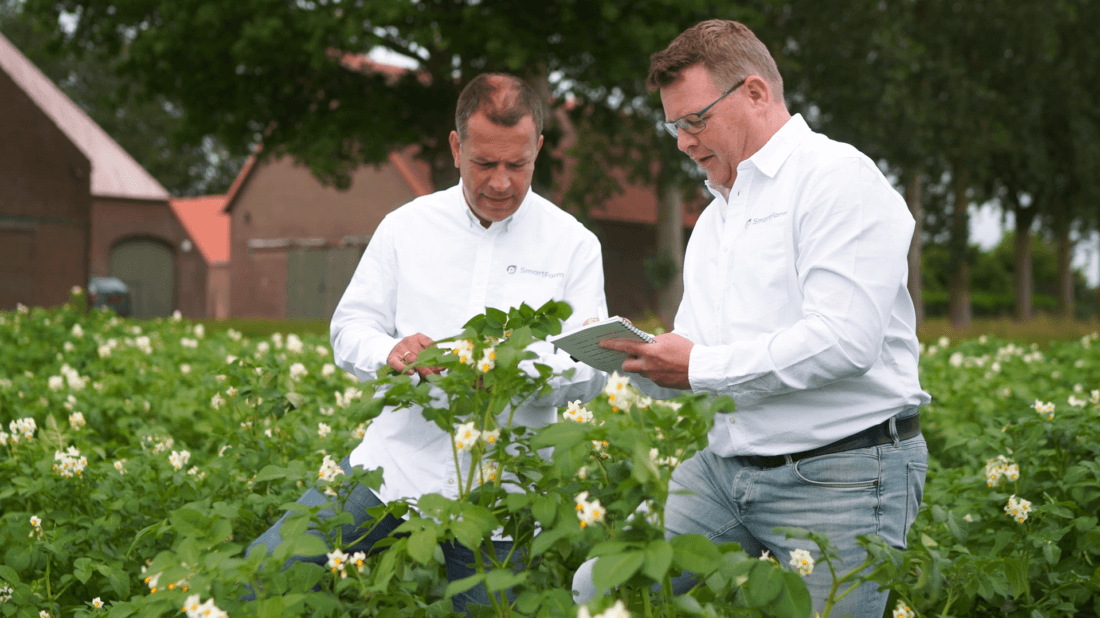1. Always spray on a dry leaf
The absorption capacity of the leaf is greatly affected by moisture. Aqueous formulations - which are the standard - are best absorbed through the cuticle layer of the leaf. If the leaf is wet, the agent partially washes away or dilutes too much. Inclement weather (high radiation, low rv) thickens the wax layer, worsening absorption. So a dry leaf under growing conditions is ideal.
2. Leaf affects temperature
Leaf temperature is often more decisive than air temperature. Sunlight heats up the leaf quickly - faster than the air around it. If the leaf temperature is high, the plant is more active and agents are absorbed faster and transported better. SmartFarm provides insight into these dynamics at the crop level.
3. Spray in sunny weather? Only when the leaves are warm
The label sometimes says "apply in sunny weather," but in fact this is an active plant. Sunny weather is no guarantee - it's all about leaf temperature. For herbicides that work through photosynthesis inhibition, however, sunlight after application is essential for proper efficacy.
4. Insecticides? Early evening is ideal
Most insecticides degrade quickly under the influence of (sun) light. They work via contact, vapor or ingestion when eaten. Spraying in the early evening is therefore ideal: the pesticide remains intact longer, while insects are still active on warm days.
5. Moisture in the air says more than temperature
The dew point temperature is a stable measure of the amount of moisture in the air. If the dew point temperature is low, the chances of rapid leaf drying are high. SmartFarm takes this into account in the hourly effectiveness calculation.
6. Dew is disastrous for uptake
Dew can leave as much as 10,000 liters of water per acre on a crop - comparable to 1 mm of rain. Spraying during or just after a dewy night often leads to runoff of the pesticide. So always wait until the foliage is dry before spraying.
7. Use a decision support system
SmartFarm combines crop protection product properties with current and expected crop weather conditions. Per hour you can see the expected effectiveness of a pesticide. This gives you guidance on the right spraying moment and enables targeted dosage choices. Especially in critical periods, this system offers a lot of value. Result: fewer agents, less loss, better effect.
8. Spray boom height is crucial for drift
The height of the spray boom has much more effect on drift than the choice of nozzles. A spray boom hanging 20 cm higher than necessary increases drift by over 150%. So always keep the boom at the correct height - preferably 50 cm above the crop - and consider the wind speed at that level.
9. Spray at night? Definitely!
In dry, hot periods, spraying at night can offer many advantages. The air is moister, leaf temperatures lower and there is no direct radiation. Especially for contact herbicides, growth regulators, insecticides and systemic fungicides, the evening or night is often the best time.
10. No evaporation with daytime sprinkling
The idea that daytime sprinkling leads to much evaporation is not true. The water from a reel or cannon is usually cooler than the air, and is often below the dew point temperature. As a result, moisture actually condenses on the droplets. Evaporation is thus similar to natural evaporation. Daytime irrigation is allowed - if necessary.
Finally
Smart crop protection requires knowledge of the crop as well as the weather. By spraying at the right time, you can save resources, improve the effect and protect the environment. SmartFarm helps you do this - based on hard data and years of experience in the field.
Also optimize your crop protection?
Stay informed
Keep up to date with the latest developments in SmartFarm


